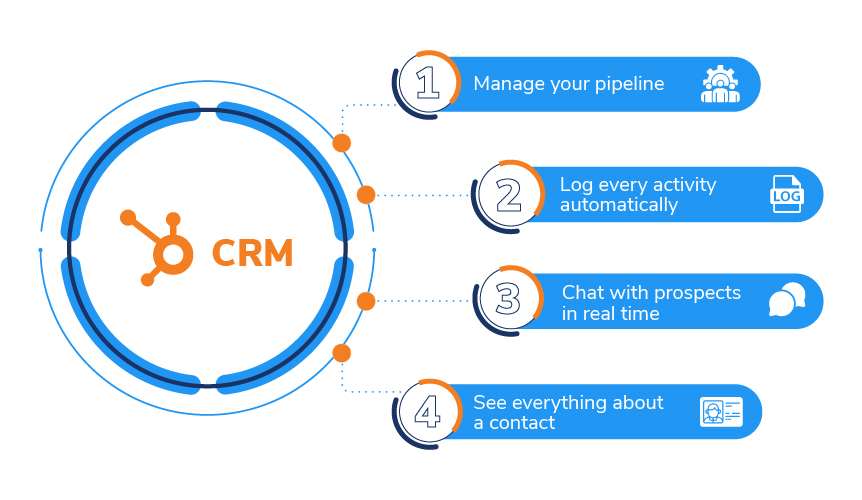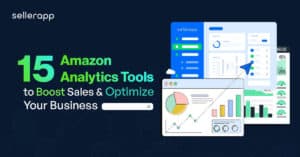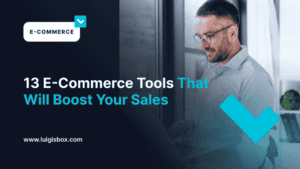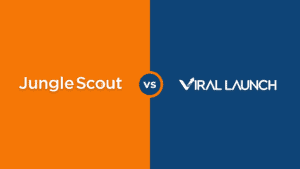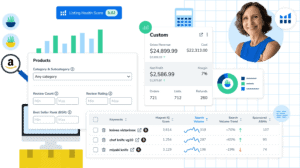Top HubSpot CRM Features for E-commerce Businesses
Discover the top HubSpot CRM features that empower e-commerce businesses to streamline operations, enhance customer engagement, and drive sales growth.
Introduction
In the fast-paced world of e-commerce, businesses face the challenge of managing customer relationships, marketing efforts, and sales processes efficiently. With fierce competition and high customer expectations, leveraging the right tools is crucial for success. HubSpot CRM offers a suite of features specifically designed to address the unique needs of e-commerce businesses. This article explores the top HubSpot CRM features that can help e-commerce enterprises streamline operations, enhance customer engagement, and accelerate growth.
The Importance of a CRM in E-commerce
Challenges in E-commerce
E-commerce businesses often grapple with:
- Customer Retention: High competition leads to low customer loyalty.
- Data Management: Handling vast amounts of customer data efficiently.
- Personalization: Providing tailored experiences to diverse customer segments.
- Marketing Automation: Managing campaigns across multiple channels.
Benefits of Using a CRM
Implementing a CRM like HubSpot can:
- Centralize Data: Store all customer information in one place.
- Enhance Personalization: Use data to tailor marketing and sales efforts.
- Automate Processes: Save time on repetitive tasks.
- Improve Customer Experience: Deliver consistent and timely interactions.
Top HubSpot CRM Features for E-commerce
HubSpot CRM offers a range of features that cater specifically to the needs of e-commerce businesses.
1. Contact and Customer Management
Efficient customer management is the backbone of any e-commerce operation.
Unified Customer Profiles
Create comprehensive profiles that include purchase history, website activity, and communication records.
- 360-Degree View: Access all customer interactions in one place.
- Segmentation: Categorize customers based on behavior, preferences, or demographics.
Benefit: Enhance personalization and improve customer service by understanding each customer’s journey.
2. Integration with E-commerce Platforms
Seamless integration ensures that your CRM and e-commerce platform work in harmony.
HubSpot Integration with Shopify and Other Platforms
Connect HubSpot CRM with popular e-commerce platforms like Shopify, WooCommerce, and Magento.
- Sync Data: Automatically update customer information and order details.
- Abandoned Cart Tracking: Capture and follow up on abandoned carts to recover lost sales.
Benefit: Streamline operations by eliminating manual data entry and keeping all systems updated in real-time.
3. Marketing Automation
Automate your marketing efforts to engage customers effectively.
Email Marketing
Create and send personalized email campaigns based on customer behavior.
- Automated Workflows: Set up trigger-based emails for welcome messages, order confirmations, and post-purchase follow-ups.
- A/B Testing: Optimize emails by testing different subject lines, content, and CTAs.
Benefit: Increase engagement and conversion rates through targeted and timely communication.
Social Media Management
Manage your social media presence directly from HubSpot.
- Scheduled Posts: Plan and automate posts across multiple platforms.
- Social Listening: Monitor brand mentions and customer feedback.
Benefit: Maintain a consistent brand presence and respond promptly to customer interactions.
4. Sales Pipeline Management
Manage your sales process efficiently to close more deals.
Deal Tracking
Monitor deals at every stage of the pipeline.
- Customizable Pipelines: Tailor stages to reflect your unique sales process.
- Real-Time Updates: Get instant notifications on deal progress.
Benefit: Identify bottlenecks and opportunities to improve sales performance.
5. Analytics and Reporting
Data-driven insights are crucial for strategic decision-making.
E-commerce Reporting Dashboard
Access reports specifically designed for e-commerce metrics.
- Sales Performance: Track revenue, average order value, and conversion rates.
- Customer Behavior: Analyze website traffic, product views, and purchasing patterns.
Benefit: Make informed decisions to optimize marketing strategies and increase ROI.
6. Customer Service Tools
Provide exceptional customer service to foster loyalty.
Live Chat and Chatbots
Implement live chat support on your website.
- Instant Support: Address customer queries in real-time.
- Chatbots: Use AI to handle common questions outside business hours.
Benefit: Enhance customer satisfaction by providing immediate assistance.
Ticketing System
Manage customer issues efficiently.
- Ticket Creation: Automatically generate tickets from customer inquiries.
- Prioritization: Assign and prioritize tickets based on urgency.
Benefit: Ensure timely resolution of customer issues, improving retention rates.
7. Personalization and Dynamic Content
Deliver personalized experiences to each customer.
Smart Content
Display content that adapts based on visitor characteristics.
- Dynamic Web Pages: Show different content to new visitors, returning customers, or specific segments.
- Product Recommendations: Suggest products based on browsing history or past purchases.
Benefit: Increase engagement and sales by presenting relevant content to each user.
Implementing HubSpot CRM in Your E-commerce Business
Step 1: Set Up Integration
Connect your e-commerce platform with HubSpot.
- Data Sync: Ensure customer data, orders, and product information are synchronized.
- App Marketplace: Use HubSpot’s app marketplace to find the appropriate integration.
Step 2: Import Existing Data
Bring all your existing customer data into HubSpot.
- Contact Import: Upload customer lists with purchase history and preferences.
- Data Clean-Up: Remove duplicates and outdated information for accuracy.
Step 3: Customize Your CRM
Tailor HubSpot to fit your e-commerce processes.
- Custom Fields: Add fields specific to your products or customer segments.
- Workflow Automation: Create automated processes for marketing and sales tasks.
Step 4: Train Your Team
Ensure your team knows how to leverage HubSpot’s features.
- Training Sessions: Conduct workshops to familiarize staff with the platform.
- Resource Materials: Provide access to tutorials and guides.
Step 5: Monitor and Optimize
Regularly assess performance and make necessary adjustments.
- Analytics Review: Use reports to track key metrics.
- Feedback Loop: Encourage team input for continuous improvement.
Case Study: E-commerce Success with HubSpot CRM
Company Profile
FashionFusion, an online retailer specializing in sustainable fashion, sought to enhance customer engagement and boost sales.
Challenges
- Disparate Systems: Customer data was scattered across multiple platforms.
- Low Customer Retention: Difficulty in retaining customers due to lack of personalized communication.
- Inefficient Marketing Efforts: Manual processes led to inconsistent campaigns.
Solution
FashionFusion implemented HubSpot CRM to centralize data and automate marketing.
- Integrated Systems: Connected their Shopify store with HubSpot for seamless data flow.
- Personalized Marketing: Used segmentation and automation to send targeted emails.
- Enhanced Customer Service: Deployed live chat for real-time support.
Results
- 25% Increase in Repeat Purchases: Personalized communication improved customer loyalty.
- 30% Boost in Email Open Rates: Targeted campaigns resonated better with customers.
- Improved Operational Efficiency: Automated tasks freed up time for strategic initiatives.
Conclusion
HubSpot CRM offers e-commerce businesses a powerful set of tools to manage customer relationships, automate marketing, and drive sales growth. By leveraging features like integration with e-commerce platforms, marketing automation, and personalized customer experiences, businesses can stay ahead of the competition and meet the evolving demands of online shoppers. Take the first step towards transforming your e-commerce operations by implementing HubSpot CRM today.
FAQs
1. Is HubSpot CRM compatible with my e-commerce platform?
Yes, HubSpot CRM integrates with popular e-commerce platforms like Shopify, WooCommerce, Magento, and more through native integrations or third-party apps.
2. Can I track abandoned carts with HubSpot CRM?
Absolutely. With the integration, you can track abandoned carts and set up automated email campaigns to recover lost sales.
3. How does HubSpot help with personalization in e-commerce?
HubSpot allows you to create personalized emails, dynamic website content, and product recommendations based on customer data and behavior.
4. Is it possible to manage customer service through HubSpot CRM?
Yes, HubSpot offers customer service tools like live chat, chatbots, and a ticketing system to manage customer inquiries efficiently.
5. Do I need technical expertise to integrate HubSpot CRM with my e-commerce platform?
No, HubSpot provides user-friendly integration processes and guides to help you set up without extensive technical knowledge.
6. Can I automate my marketing campaigns with HubSpot CRM?
Yes, you can create automated workflows for email marketing, social media posting, and more to engage customers effectively.
7. How does HubSpot CRM help improve customer retention?
By providing tools for personalized communication, timely customer support, and targeted marketing, HubSpot CRM helps enhance customer satisfaction and loyalty.
Top Tools for E-commerce Businesses
Enhance your e-commerce operations with these top tools:
HubSpot CRM
A comprehensive CRM platform offering integration with e-commerce systems, marketing automation, and customer service tools to drive sales growth.
Spocket
Provides access to a vast network of suppliers for dropshipping, making it easier to source products for your e-commerce store.
Zoho Inventory
Offers inventory management solutions to keep track of stock levels, orders, and deliveries, ensuring smooth operations.
Drip
An e-commerce CRM that specializes in personalized marketing automation to boost customer engagement and sales.
Katana Cloud Inventory
Helps manage inventory and production processes, ideal for e-commerce businesses with manufacturing components.
Keywords: HubSpot CRM features, e-commerce businesses, inventory management, growth hacks, marketing automation, customer engagement, CRM integration, personalized marketing, sales growth, HubSpot e-commerce integration

